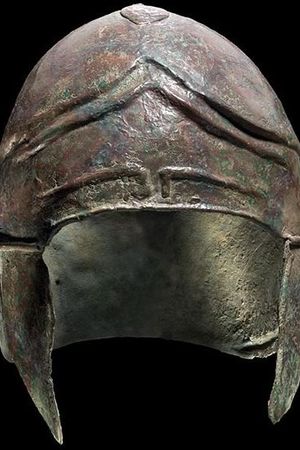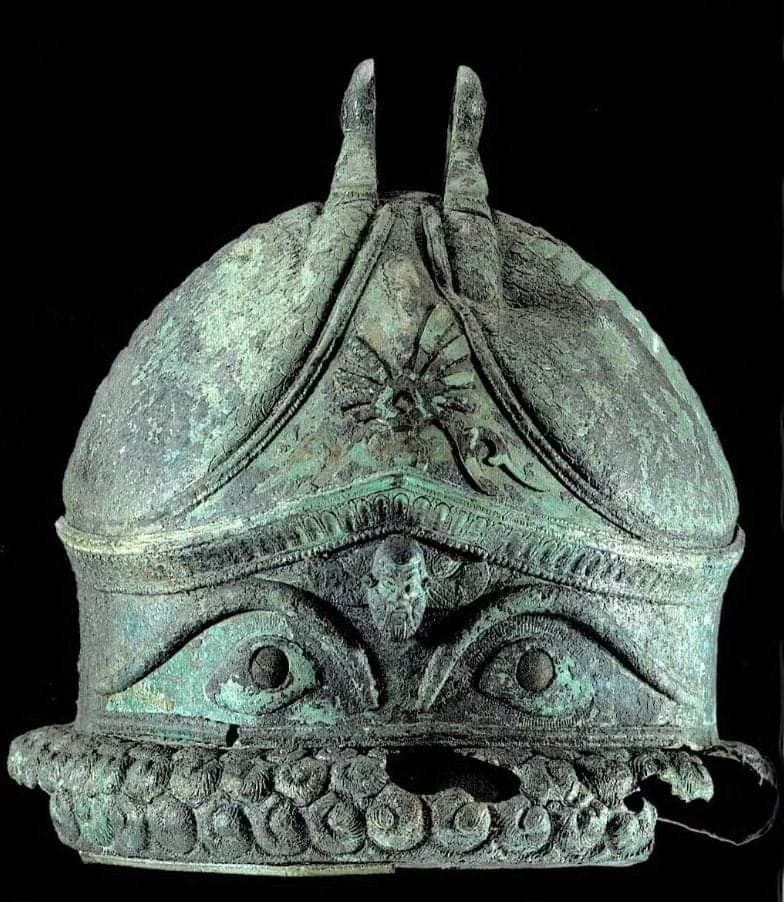In the realm of ancient artifacts, few items captivate the imagination quite like the Bronze helmet with ocular decoration found in the Wrapped Tomb (Tarquinia). Dating back to the 5th century B.C., this remarkable piece of Etruscan craftsmanship now resides in the prestigious Altes Museum in Berlin, Germany.
Unveiling the Etruscan Helmet

The Bronze helmet discovered in the Wrapped Tomb of Tarquinia offers a glimpse into the evolution of ancient military gear. During the Bronze Age, helmets evolved significantly among the Etruscans, reflecting both indigenous styles and influences from neighboring cultures. Early designs included simple caps of Etruscan or Italic origin, often adorned with geometric patterns or embossed disks.
Evolution of Etruscan Helmet Design
By the 6th century B.C., Greek influences began to shape Etruscan helmet styles. The introduction of the Attic helmet, characterized by a kymation at the forehead and a prominent lòphos (crest), marked a significant shift in design. This influence continued into the 5th century B.C., when helmets with nasals and decorative cheek guards became prevalent, showcasing intricate low relief decorations.
The Discoveries at Tarquinia

The Wrapped Tomb at Tarquinia yielded not only the Bronze helmet with ocular decoration but also a rich array of artifacts shedding light on Etruscan burial practices and craftsmanship. This particular helmet stands out for its sophisticated design, featuring ocular decorations that enhance both its functionality and aesthetic appeal.
Artistic and Functional Mastery
Crafted from bronze, a material synonymous with durability and prestige in the ancient world, this helmet exemplifies the Etruscan mastery of metallurgy. The ocular decoration, possibly serving both practical and symbolic purposes, underscores the cultural and military significance attached to such artifacts during the 5th century B.C.
Legacy and Influence
Over time, Etruscan helmet designs continued to evolve, incorporating influences from neighboring cultures like the Celts. By the late 4th and 3rd centuries B.C., Etruscan artisans produced helmets with keeled caps and flat rim slats, which were not only used locally but also exported to regions with Celtic settlements.
Conclusion
The Bronze helmet with ocular decoration from the Wrapped Tomb in Tarquinia stands as a testament to the ingenuity and artistic prowess of the ancient Etruscans. Preserved meticulously in the Altes Museum, this artifact not only provides insights into ancient military technology but also serves as a reminder of the cultural exchange and innovation that characterized the ancient Mediterranean world.
Through artifacts like this helmet, we continue to unravel the mysteries of ancient civilizations, appreciating their artistry, craftsmanship, and enduring legacy in the annals of human history.
